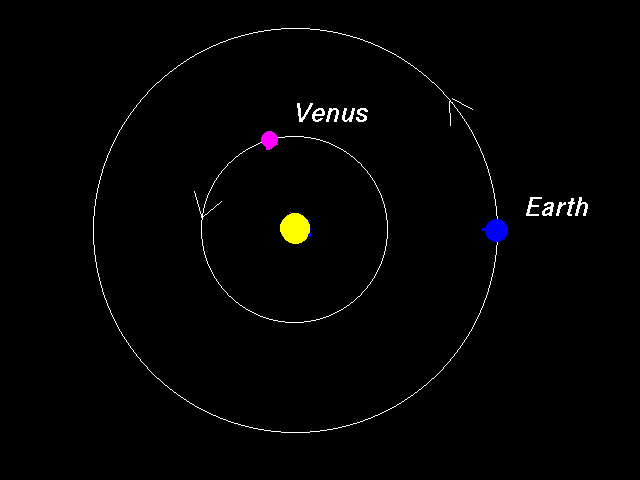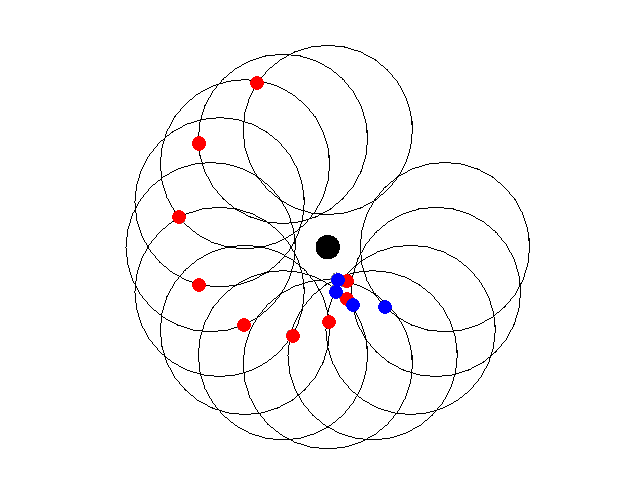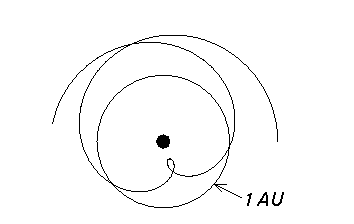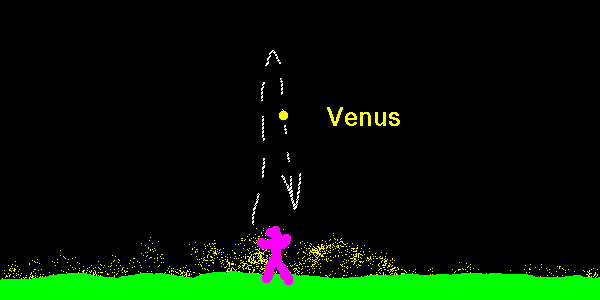

It is useful to plot the path of Venus taking the earth as fixed. To do
this, first draw two arrows, the first from Earth to the sun, the second
from the sun to Venus:


The result.

Here we see a small circle of radius 0.723 AU that revolves about the
earth (at the center). The center of the small circle moves along a big
circle of radius 1.00 AU once each year. Venus, represented as a red
dot, revolves about the center of the small circle once every 0.615
years. After the point of closest approach, I have changed the red dot
to a blue dot for clarity.
Connecting the dots gives the path of Venus relative to the earth.

Here is the path of Venus relative to the earth over 8 Earth years (which
is 13 Venus years).

Here is what we get if we plot the position of Venus on the celestial sphere
on successive days.

Prediction for what we see.

For a while we see Venus in the evening sky. Then it appears in the
morning sky. Here is a picture of what we would see on successive nights
one hour after sunset.